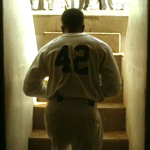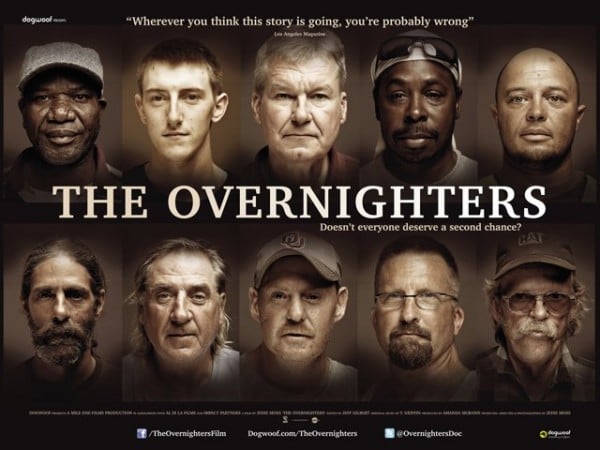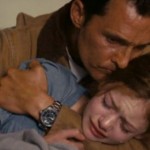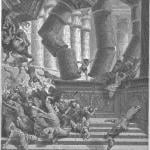 In the Bible, in the New Testament, there is a letter written from the great Christian convert and leader Paul to a church he founded in the city of Ephesus in Asia Minor. It contains a passage that is cause for much debate and angst in the church, a passage that compares a husband to Christ and the wife to the church.
In the Bible, in the New Testament, there is a letter written from the great Christian convert and leader Paul to a church he founded in the city of Ephesus in Asia Minor. It contains a passage that is cause for much debate and angst in the church, a passage that compares a husband to Christ and the wife to the church.
Paul writes, quoting Jewish scripture:
“For this reason a man shall leave his father and mother and be united to his wife and the two will be one flesh.” This is a profound mystery, but I am talking about Christ and the church.
This “profound mystery” lies at the heart of Terrence Malick’s exposition of love and marriage To The Wonder, or at least I think it does. With Malick films, one feels shy about making absolute statements.
Malick, reportedly a Catholic, poured his faith out in the profound The Tree of Life, a movie that moved me so much, it inspired a tattoo on my arm.
In To the Wonder, Malick weaves together the story of two marriages. They inform each other and both flow from and to the love of God, the ultimate Bridegroom. Parisian Marina (Olga Kurylenko) marries American Neil (Ben Affleck) after a weighty and confusing courtship, made more complex by an unresolved love between Neil and Jane (Rachel McAdams). The second marriage is of Marina’s priest Father Quintana (Javier Bardem) to God.
The two marriages run in roughly the same course. First, there is an undeniable, life-altering love, a love that changes everything, recasts the universe, and reshapes the people on which it falls. Before the love, life was Marina’s own, Father Quintana’s own. After the love, they must rework their lives to be with the beloved, to reflect the new reality.
Although the love changes everything, the euphoria fades. Marina is left with a man who seems distant and unreachable. Father Quintana is left with a God that seems distant and unreachable.
And that is when love is tested, when the reality of love is either believed and held or lost. The two types of love flow from the same source, “the Love that loves us,” as Marina puts it.
Terrence Malick tells his stories in unique ways. He cares much more about the cries of the heart and the whispers of the mind than everyday dialog. So the prayers and unspoken longings of the characters are told in whispered voiceovers while the details of their lives are hard to know. This makes the movie almost unbearably quiet, still, nearly silent, like a cathedral in the middle of the day, holy but ineffable.
Sometimes it works and his style delivers profound truths, but other times it just leaves the viewer feeling quietly lost. It doesn’t help that many of the voiceovers here are in French and Spanish.
Still, you get the sense that love is a real thing, more real than we often believe. And that is, paradoxically in our sex-crazed world, a message the world needs. But you don’t know what that means for life, for love, for a soul, by the end of the movie, because so little is resolved.
And a little unresolved for a Terrence Malick film is, like, WAY unresolved for a normal film.
The scenes of the priest made me weep at times, for a man who so loved his God as to dedicate his life to Him, but then loses all sense of his lover. It is beautiful, his tired faithfulness, his desperation for the God he knows is there somewhere. He knows He is there because of the love that changed everything and remains undeniable, even in the past.
And yet, I ended the film wishing there was more. This juxtaposition of marriage and relationship with Christ fascinates me. I want to see, to feel, to know how Malick’s theology reflects his ideas of love and marriage. I suspect he may be one of the few filmmakers who actually has something profound to say about it.
And yet, I felt he teed up the ball but didn’t swing. In his other films, you have to dig for truths but they’re waiting to be discovered. I felt like there was less here.
Also less was the cinemagraphic wonder. Malick chooses beautiful shots of water, nature, rocks, streams, beaches, and lingers on them. Yet, in The Tree of Life, many of his frames had theological implications in themselves. They meant something, the imagery was alive. They were dreamlike, creative, alternate realities that expressed his truth. This film doesn’t have the same level of forethought or theology in the very images.
Sometimes a stream is just a stream, I guess.
On one level, I love that Malick had the courage to address love as a profound mystery rather than a gretting card comedy we get every month or so at the theater. On the other, I wish he’d be a tad less profound and a tad more approachable.












